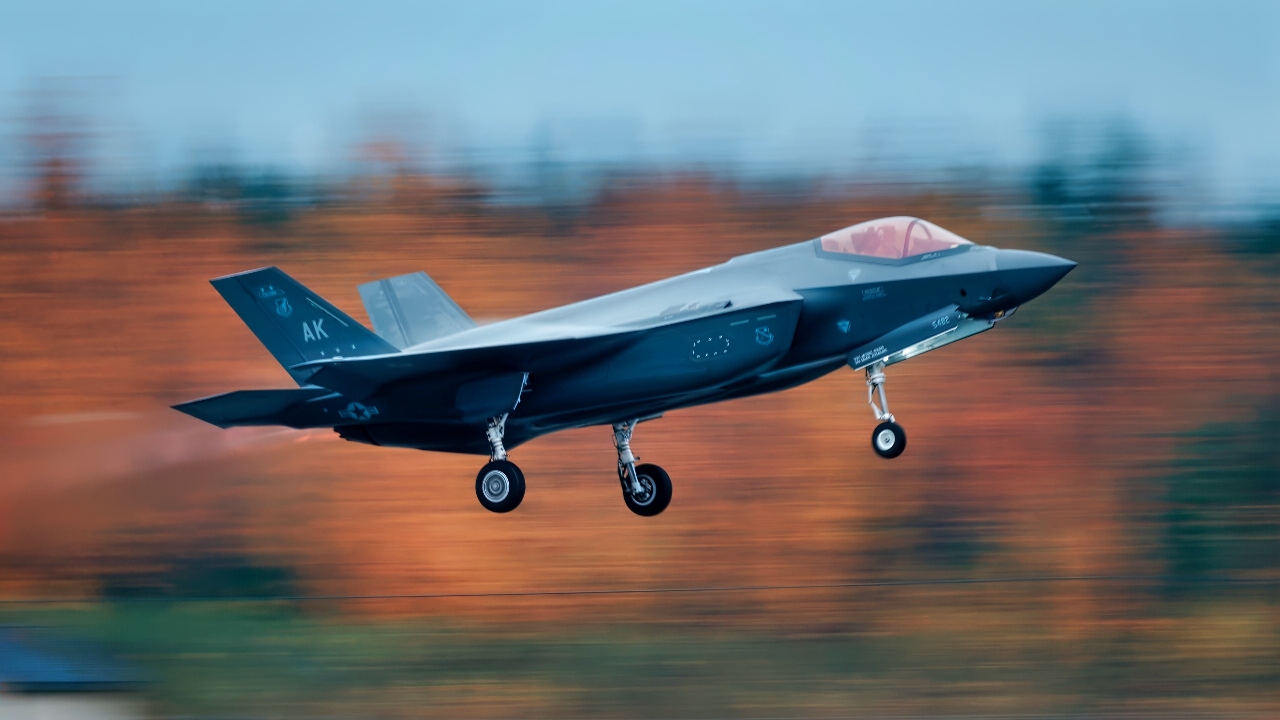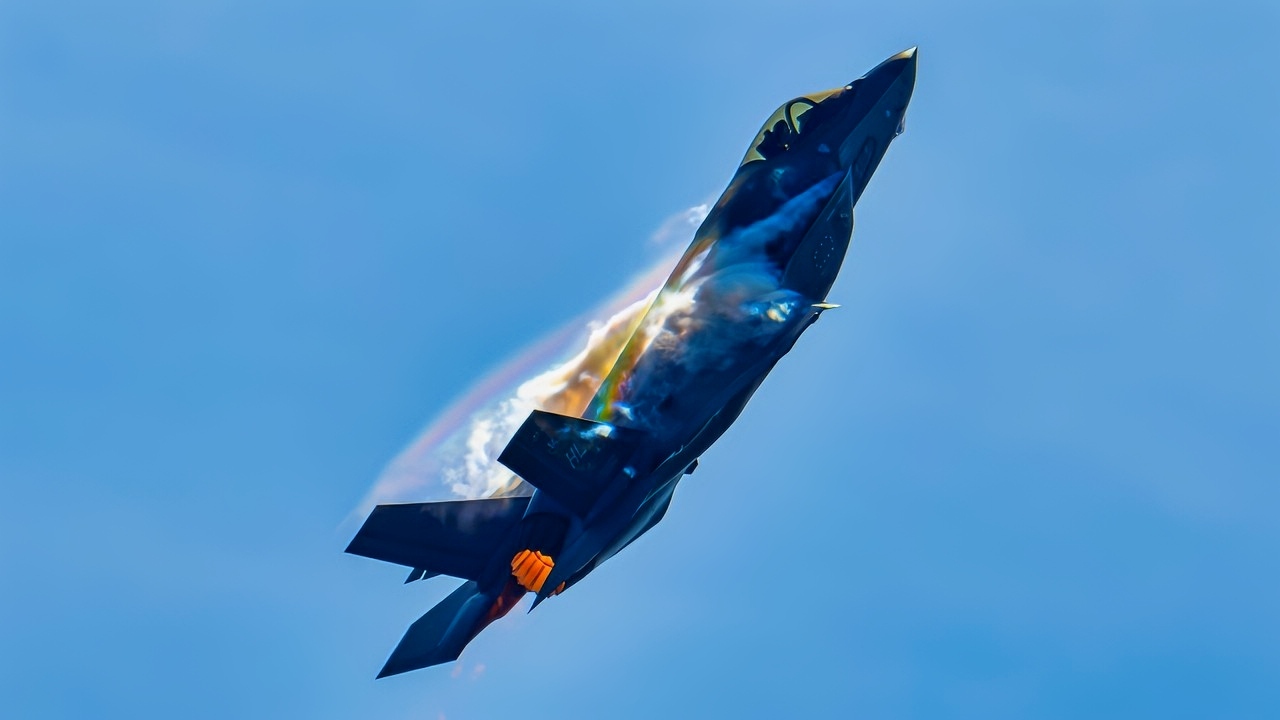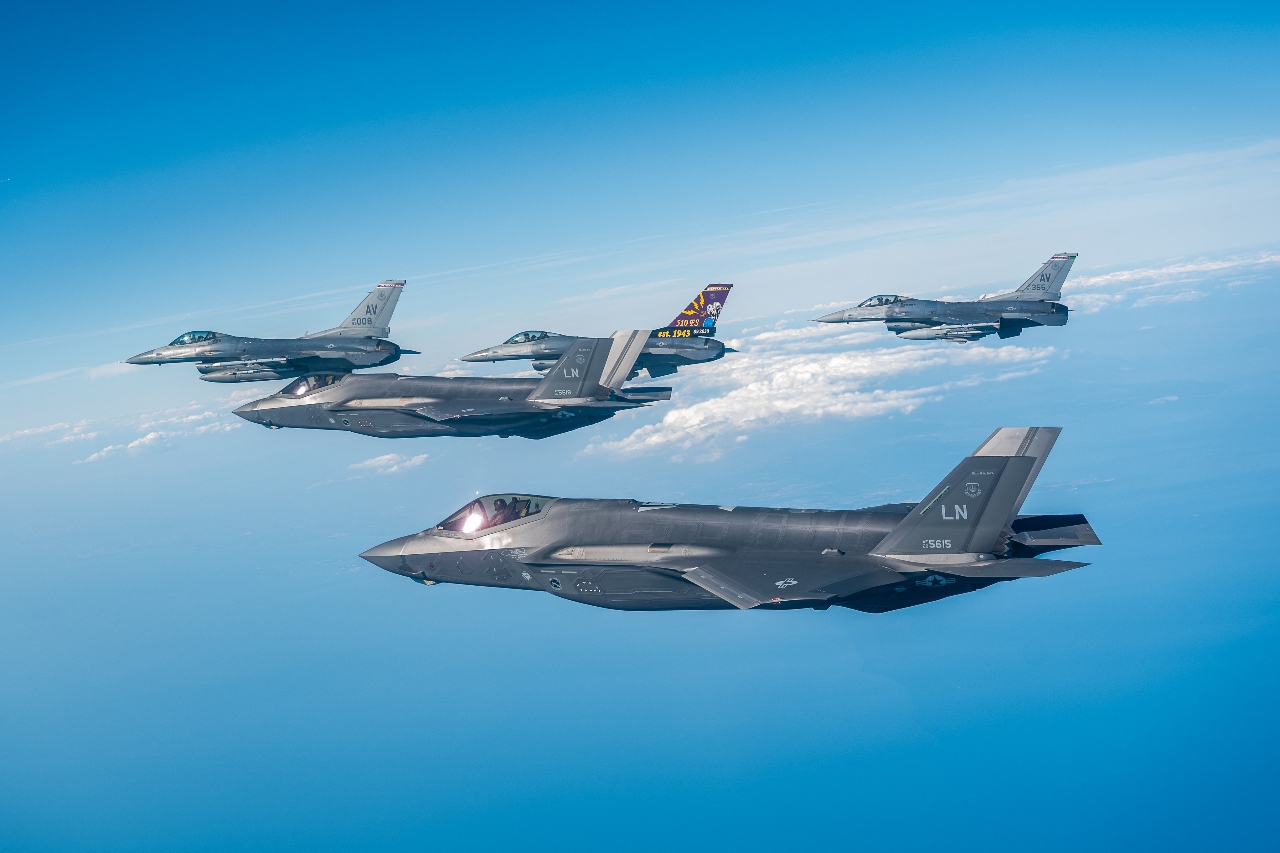Key Points and Summary – The F-35’s critical Block 4 upgrade package is now five years behind schedule, expected in 2031, and $6 billion over budget, according to a scathing Government Accountability Office (GAO) report.
-The update includes over 75 major improvements like increased missile capacity and advanced electronic warfare.

A F-35 Lightning lll assigned to the 354th Fighter Wing takes off from Eielson Air Force Base, Alaska September 19, 2024. The F-35 was participating in a multiple aircraft exercise for the 354th FW. (U.S. Air Force Photo by Senior Sean Lamb)
-The GAO revealed all F-35s delivered in 2024 were significantly late. It also criticized the program’s incentive structure, which rewards contractors even for late deliveries.
-Facing these massive delays and cost overruns, the F-35 program now plans to reduce the scope of the vital Block 4 modernization.
F-35 Fighter ‘Quantum Leap’ Upgrade Is Now 5 Years Late and $6 Billion Over Budget
The latest updates to the F-35 stealth fighter jet—the highly anticipated Block 4 update—will be delayed by five years, according to the Government Accountability Office, with full integration anticipated for 2031. The update, which aims to integrate software and hardware updates to the F-35, is already $6 billion over budget, as of this fall.
Detailing the specifics of the update, the F-35 website explains that “Block 4 upgrades are bringing quantum leaps in capability to the world’s most advanced, survivable and connected fighter,” detailing the modernization and added that the block 4 update encompasses “over 75 major upgrades for all three F-35 variants – is the most significant evolution of F-35 capabilities to date, including increased missile capacity, advanced electronic warfare capabilities and improved target recognition.”
The update is wide-ranging and represents one of the most significant changes to the F-35’s internals to date.
The stealth fighter’s latest optimization features an expanded missile carry capacity, enhancements to the jet’s target identification capabilities, and “added advanced non-kinetic electronic warfare capabilities.”

U.S. Air Force Maj. Melanie “Mach” Kluesner, F-35A Demonstration Team pilot, performs aerial maneuvers during the Abbotsford International Airshow in British Columbia, Canada, Aug. 9, 2025. The team travels worldwide to demonstrate the capabilities and precision of the U.S.’s most advanced fifth-generation fighter. (U.S. Air Force photo by Senior Airman Nicholas Rupiper)
The update also sees Tech Refresh-3 integration, which “enables Block 4, introduces open mission systems architecture, a new integrated core processor with greater computing power, an enhanced panoramic cockpit display, a larger memory unit and other classified capabilities.”
But given the problems of the Block 4 update, the F-35 program plans to reduce its scope to ease implementation.
The report from the Government Accountability Office, a watchdog, can be read in full here.
Several Issues for F-35
GAO’s report is a stark and uncomfortable read, one replete with examples of egregious delay. The program contractors, Pratt & Whitney and Lockheed Martin, “continued delivering aircraft and engines late. For instance, in 2024, Lockheed delivered 110 aircraft. All were late by an average of 238 days, up from 61 days in 2023.”
Steady Upgrades, Updates, and a Platform Refresh
The Block 4 updates to the F-35 fighter jet are not the last of the updates that will be implemented onto the stealth platform, but it is one of the F-35’s most important refreshes.
An increase in the jet’s onboard missile capacity, stored internally to prevent compromising the jet’s stealth capabilities, is of clear and obvious utility to the stealth fighter. But another, perhaps equally significant change to the fighter would involve optimizations to the jet’s engines, specifically improvements to the F-35’s turbine blades that pull and compress air into the engine.

A formation of U.S. Air Force F-35 Lighting IIs and F-16 Fighting Falcons assigned to the 48th and 31st Fighter Wings respectively fly in formation as a part of Exercise Combined Strike along the coast of Italy, August 18, 2025. Exercises like Combined Strike ensure USAFE remains ready and postured to rely on one another to defend the area of responsibility. (U.S. Air Force photo by Senior Airman Zachary Jakel)
The turbine blade improvement was to be a centerpiece of the program, but fell victim to the now pared-back Block 4 update. The Government Accountability Office further said that although those turbine blades were not the linchpin of Block 4, the optimizations that were to be implemented as part of Block 4 will be truncated as a consequence.
Defense Dollars and Cents
The GAO paper specified that F-35 program incentive fees are partly responsible for the Block 4 kerfuffle.
The financial incentive, a carrot used to encourage Pratt & Whitney and Lockheed Martin, is to meet their obligations to the program. The GAO faults the financial incentives for redirecting funds to other F-35 program areas after it became clear that the aerospace firms would not meet their F-35 progress markers. And that, says the GAO, is one of the biggest inefficiencies of the stealth fighter program.
“Unless the F-35 program reevaluates its use of incentive fees and better aligns them to achieving desired production schedule outcomes,” the GAO wrote, “it will be at greater risk of continuing to reward contractors for delivering engines and aircraft late.”
For some of the F-35 aircraft, Lockheed Martin could deliver jets up to 60 days late and still recoup part of the money the firm would have earned for on-time deliveries.
F-35: What Happens Now?
Though a government accountability body, the GAO does more than point out deficiencies. In the report, the GAO made a series of recommendations.
The GAO said that the primary importance of the program is for the Department of Defense to examine the defense firm’s production capacity and ability to meet its production obligations.
Another recommendation is to reexamine the program’s incentive fees and streamline update implementation, including “product development, such as developing a minimum viable product, pursuing digital twins that can be used to inform development, and updating modeling and simulation tools in real time.”
Can the Government Accountability Office’s recommendations be implemented in a timely manner?
And more to the point, can the F-35 program—already the world’s most expensive defense acquisition program—curtail cost overruns in the future? The answer to that question remains to be seen.
About the Author: Caleb Larson
Caleb Larson is an American multiformat journalist based in Berlin, Germany. His work covers the intersection of conflict and society, focusing on American foreign policy and European security. He has reported from Germany, Russia, and the United States. Most recently, he covered the war in Ukraine, reporting extensively on the war’s shifting battle lines from Donbas and writing on the war’s civilian and humanitarian toll. Previously, he worked as a Defense Reporter for POLITICO Europe. You can follow his latest work on X.
More Military
Mach 6 SR-72 Darkstar Could Soon Be the ‘Fastest Plane on Earth’
America’s E-4B Doomsday Plane Has a Message for Russia and China
AIP: The Cheap Stealth Submarines the U.S. Navy Will Never Build
Russia’s Su-57 Felon Stealth Fighter Finally Opens Its ‘Secret’ Weapons Bay Doors
Canada’s Big F-35 Fighter Choice Is Stuck in ‘Stealth Limbo’










